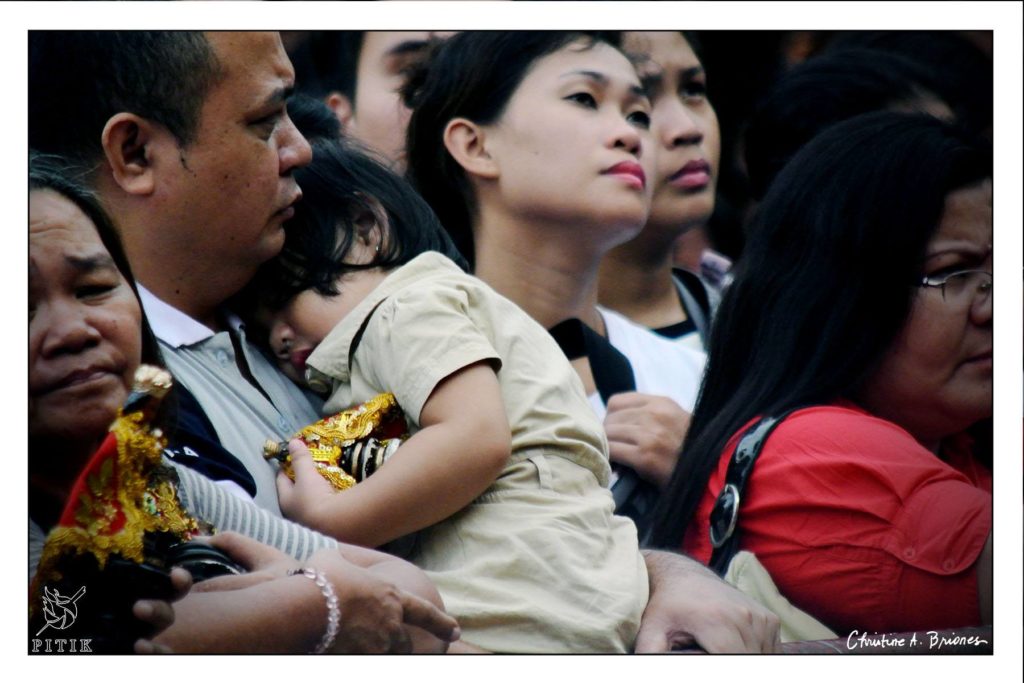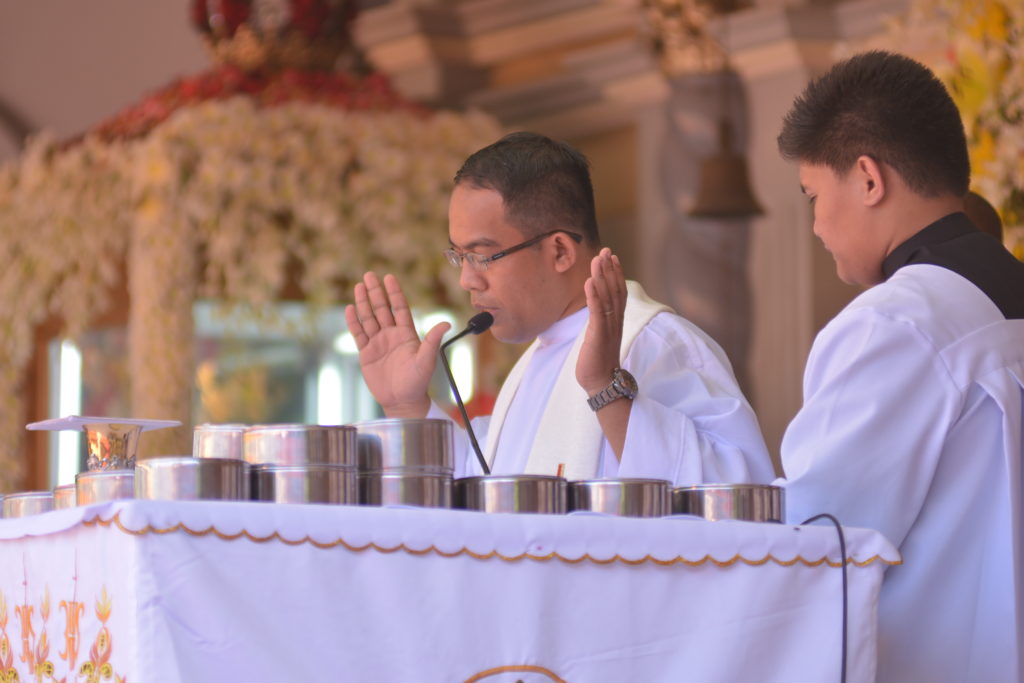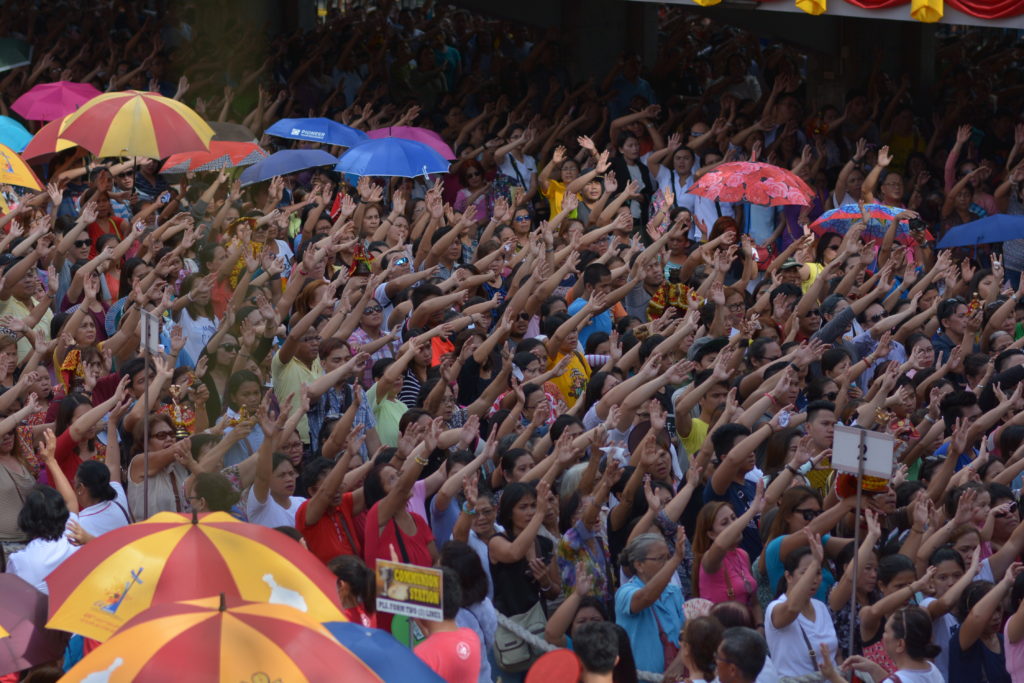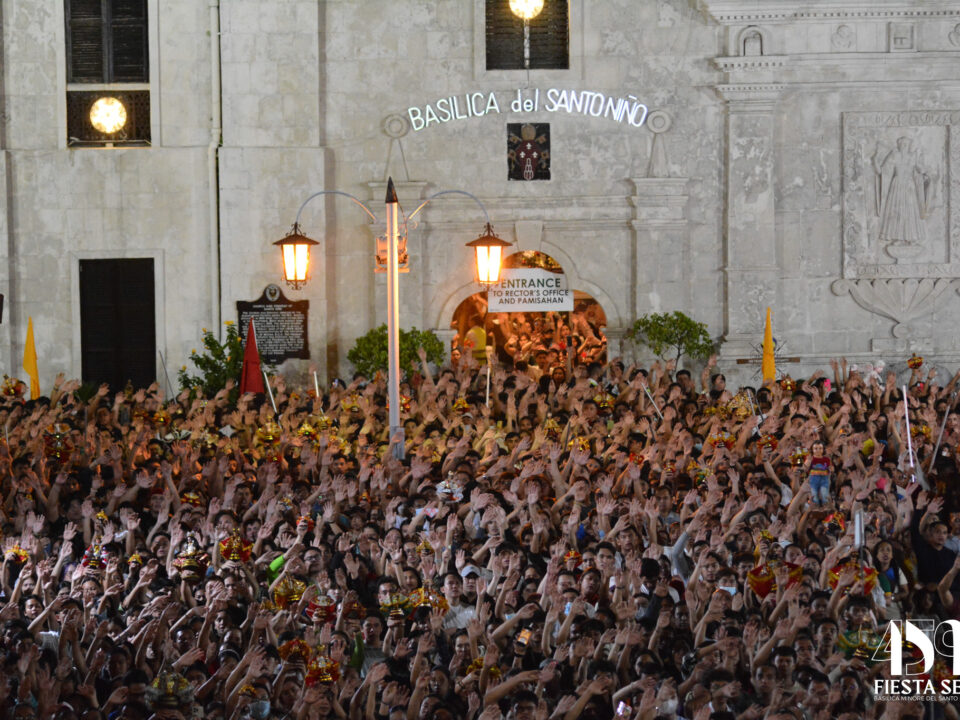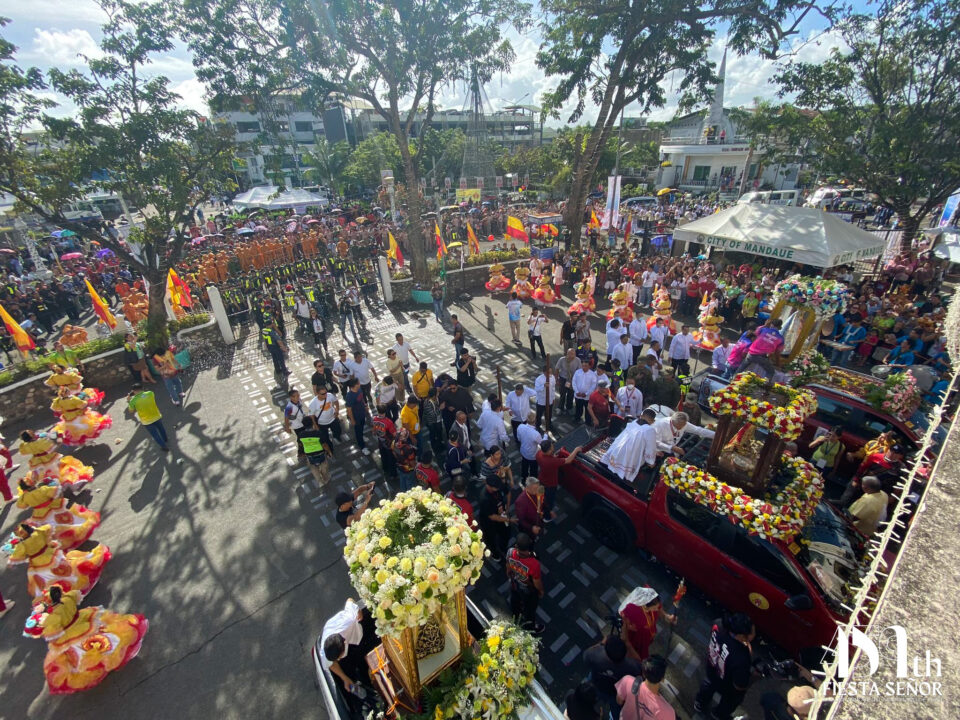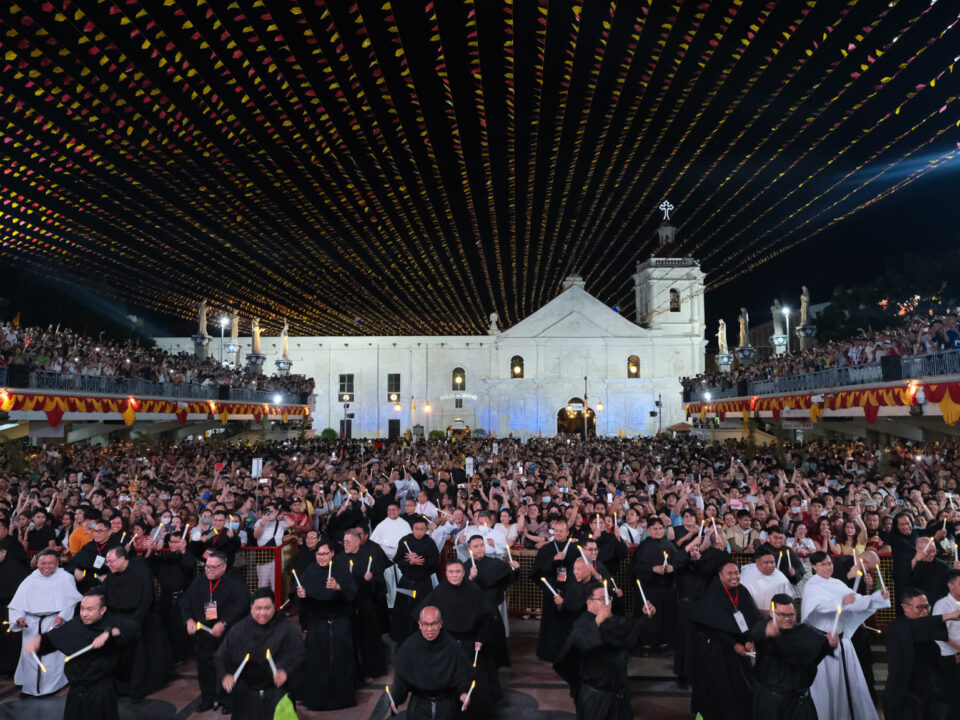The Eucharist and the Devotion to Santo Niño: The Care for the Least
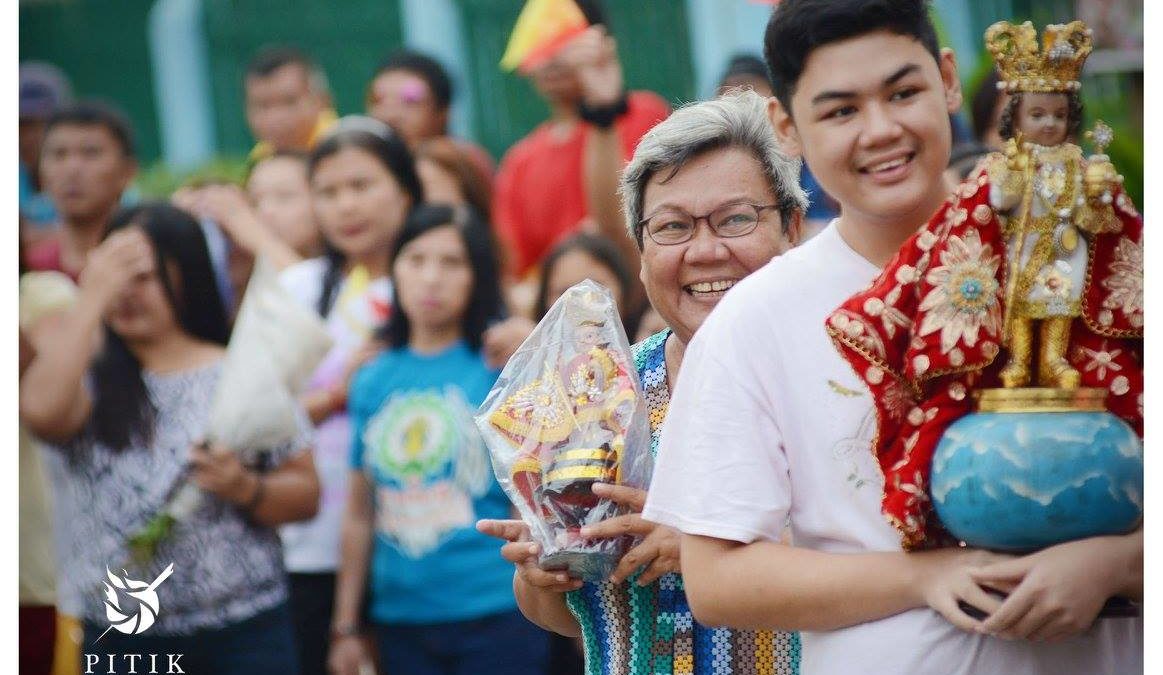
INTRODUCTION
Your Eminences,
Your Excellencies,
(Brothers and Sisters in the Lord,)
First of all, I would like to express my appreciation to the officers and members of the Catholic Bishops’ Conference of the Philippines for inviting me, through Fr. Melvin Mejia, CBCP Secretary, to share some reflections on the topic “The Eucharist and the Devotion to Santo Niño: the Care for the Least”. I intentionally use the word “reflection”, since I am not a theologian and therefore what I will share with you is more experiential than theological. I also would like to qualify Santo Niño with that of Cebu, since I consider this sharing not strictly speaking a theological presentation on the Eucharist and the devotion to the Holy Child in general, but more about the relationship between the Eucharist and the devotion to the Child Jesus through the Santo Niño de Cebu which I am more familiar with. This approach to the topic is greatly influenced by the ongoing celebration of the 450th year of “Kaplag”, or the finding of the image of Santo Niño, spearheaded by the Augustinian Province of Santo Niño de Cebu. Let me state beforehand that the devotion to the Child Jesus is closely linked to, or even rooted in, the Eucharist.
Relationship between the Eucharist and the Devotion to the Santo Niño
From the outset, I can venture to say that from the initial stage of the Christianization of our land, starting from the departure of the Spanish expeditions from the ports of Mexico – the expedition led by Ferdinand Magellan, which arrived in the Philippines in 1521, and the other led by Legazpi which reached our shores in 1565 – a close relationship existed between the Eucharist and the devotion to the Santo Niño.
As practiced during that period, any expedition always commenced with the celebration of the Eucharist (cf. Blair – Robertson, “The Philippine Islands” [Vol. 2, 1493-1803] 1903: 91), attended not only by the officers and men commissioned to sail for the intended destination, but also by the religious and civil authorities, together with the men’s families, relatives and friends. This act of celebrating the mass was both an offering to God for the success of the venture and for the safety of the voyagers, as well as an appropriate reminder and assurance to the members of the expedition that they are not alone in their journey, for God always accompanies them. The divine presence in their midst was rendered more tangible by their participation in the celebration of the Eucharist, in their receiving the “Body and Blood” of the Lord Jesus Christ during the Holy Communion. In fact, there are indications that daily celebration of the mass took place throughout the voyage, and that one of the first acts that those leading the expeditions did upon sighting and embarking on a land is to celebrate the mass (cf. Blair – Robertson 1903: 111).
Understandably, to supplement the early conquistadores’ consciousness of God’s accompaniment, crucifixes, and religious icons or images, particularly that of the Santo Niño and the Blessed Mother, were also provided (cf. San Agustín, “Conquistas de las Islas Filipinas [1565-1615]” 1998: 135). This claim is validated by the account of the baptism of the royal household of King Humabon and Queen Humamay – baptized as Carlos and Juana respectively – when Magellan, through the fleet’s chaplain at that time, Fr. Pedro Valderrama (a diocesan priest) (cf. San Agustín 1998: 131) and Antonio Pigafetta, the chronicler of the expedition, gave Queen Juana with the statuette of Santo Niño and King Carlos that of the Ecce Homo (the bust of the Lord crowned with thorns) as gifts after their baptism. An image of the Blessed Mother (identified by some authors as Virgen de los Remedios – this being the favorite title of Mary among the conquistadores) – [cf. wikepedia’s article on this title of the Blessed Mother] was likewise given as a gift to the newly formed community of believers, presumably to all of them, since the chronicler did not specify who among the newly baptized was the recipient.
The prominent role given to Santo Niño among the religious icons, at the beginning of the history of Christianization in our land, was due to that providential “finding” (or kaplag in Cebuano) of the image of the Holy Child in 1565 by members of the Spanish expedition, led by Miguel Lopez de Legazpi. The chief navigator at that time was Fray Andres de Urdaneta, an Augustinian friar, accompanied by his four other confreres who served as chaplains of the voyage – namely, Fray Martin de Rada, Fray Andres de Aguirre, Fray Diego de Herrera and Fray Pedro Gamboa (cf. San Agustín 1998: 233). That image was believed to be the one given forty-four years earlier to the newly baptized Queen Juana by the group of Magellan, and its finding was believed to be a divine sign approving the evangelization of the newly discovered group of islands destined to become a predominantly Catholic county, the Philippines. As a response to the discovery, a solemn religious procession was immediately conducted, presumably culminating with the celebration of the Eucharist in the hut where the image was discovered. Legazpi also ordered the construction of a more permanent chapel for the holy icon and of a monastery for the Augustinian friars to whom the Comandante entrusted the safety and care of the Santo Niño. (cf. San Agustin 1998:343).
The belief that the finding of the image was a divine sign (cf. San Agustín 1998: 337) definitely contributed to the zeal of early missionaries in spreading the Catholic faith to other parts of the country. This explains thereby the proliferation of many other replicas or images of the Santo Niño in places like Arevalo in Iloilo, Tondo, Manila, etc. No less than Pope Francis himself acknowledged this special role of the Santo Niño in the evangelization of our land: “The image of the Holy Child Jesus accompanied the spread of the Gospel in this country from the beginning. Dressed in the robes of a king, crowned and holding the sceptre, the globe and the cross, he continues to remind us of the link between God’s Kingdom and the mystery of spiritual childhood.” (Homily delivered last January 18, 2015 at the Rizal Park.)
It is to be noted, moreover, that the fervent devotion to Santo Niño by the followers of Legazpi after the “kaplag” was preceded by a presumed belief in the power of the holy image on the part of the natives. When the image was found, accounts say that there were flowers strewn around it and that various attempts were made by the natives to reclaim the image (cf. San Agustín 1998: 335 and 339). Definitely, this primitive belief helped facilitate later the conversion of many to the Catholic faith, and it was the task of the early missionaries and lay catechists to purify such belief, and put the devotion to the Santo Nino (and to other Saints for that matter) in its proper context within the Catholic faith.
To highlight the centrality of the Eucharist in the newly introduced faith, the early missionaries built various structures of worship and enjoined the daily celebration of the Holy Mass in the main churches (cf. Blair – Robertson, “The Philippine Islands” [Vol. 1, 1493-1529]: 142). Catechism was intensified for the new converts, teaching them essential elements of the Catholic faith, particularly those contained in the Creed, the sacraments, and other devotional practices. The missionaries also exerted efforts to prevent the conversion of the devotion to the Santo Niño into an “idolatrous” one. They did this through proper catechism, preaching, publication of religious books and so forth.
Understandably, the danger of such a popular devotion to become or, at least, to be perceived as “idolatrous” even in the present age is quite real. Fortunately, the close link of the Santo Niño devotion to the celebration of the Eucharist helps avert such danger. We can even say that the devotion to Santo Niño today is Eucharist-centered. The introduction of the Novena-Mass, duly approved by the ecclesiastical authorities during the celebration of the 4th Centenary of the Christianization of the Philippines last 1965, can be read along the same vein of attempts to put the devotion to the Santo Niño within its proper context. Hence, the prayer book used during the said Novena-Mass contains both the theological foundation of the devotion and the historical relevance of such act of worship to our people. The usual practice, too, of always celebrating mass during gatherings honoring the Holy Child contributes to the proper understanding of the nature of such devotion in relation to the other teachings of the Church, particularly the Eucharist.
The Eucharist: the “Sunray” of Conversion
The primary factor that contributed to the initial evangelization of the country was definitely the Eucharist. Hildebrando Card. Antoniutti, the Papal Legate during the celebration of the Fourth Centennial of the Christianization of the Philippines in 1965, underlined this claim:
“It was by contact with the Blessed Eucharist that your country began its Catholic history, and was immediately influenced in its civil organizations. In an atmosphere of incomparable mysticism, in this very place the first Mass was celebrated, and marked the blessed beginning of the new religious life of an entire people. From this beach, the sun of the Eucharist spread its rays abroad, gradually taking possession of all the islands which, illuminated by Christ in the Blessed Sacrament, were converted to the Catholic faith” (cf. Fourth Centennial of the Christianization of the Philippines, The Cebu Celebration, edited by Rev. Rodolfo Villanueva, Cebu City 1965: 110).
No doubt from the very beginning, the centrality of the Eucharist in the life of the Church was not only recognized but consciously cultivated and promoted. The preaching and the spreading of the Good News among the early converts would not have taken deep roots in their minds and hearts without their experiencing the enlightening and animating presence of the Lord in the Eucharist.
Obviously, other liturgical celebrations, the reception of other sacraments and the celebration of the Word have accordingly contributed to early converts’ growth in faith. And this growth in faith, as well as in hope and in love, would later lead to the realization among the faithful that in the Eucharist they do not only experience the real presence of the Lord, but likewise the mutual or reciprocal presence of the Lord in them and each other’s presence in Him. In the Eucharist they are united with Christ, just as they are united with each other in Him.
As our former Prior General, Fr. Martin Nolan, OSA, declares:
“The celebration of the Eucharist is at the centre of the pilgrim life of the Church, a summit to which Christians aspire and the Source from which all its divine energy flows….[It] brings about intimate union with the Lord. It is however more than a private meeting. It expresses and nourishes the total Christ. There is one bread and one body, and we, though we are many, make up that one Body (1 Cor. 10:17)” [The Eucharist and Growth in the Church”:163].
This inspired realization and faith-based experience of oneness with the Lord and with each other leads to the logical consciousness of our being one “community”, one body. Ordinary people would not immediately be aware or even knowledgeable about the concept of the “Mystical Body of Christ”, or in the language of St. Augustine, of the “Totus Christus” (cf. Sermons 341.1 and 9.1). But definitely, they can feel and experience the “spiritual magnet” that attracts or draws them to be one with each other and with the whole Church. There is this “bato balani” – a term found in a popular gozos or hymn for Santo Niño referring to the Holy Child – that invites them to be one: one with the Lord, one with each other in Him, and one with the rest of the faithful or with the whole Church. This “spiritual magnet”or “bato balani” is definitely Christ himself present in the Eucharist, represented and made visible by the sacred image of the Santo Niño.
At this point, I would like to venture to say that the “sunrays of the Eucharist” have transformed the very nature of the devotion to the Santo Niño. While private devotion to the Holy Child is possible and has value in itself, through devout recitation of personal prayers and of the novena, there is a general perception that the completeness or fullness of the devotion could be experienced only when coupled with the celebration of the Eucharist. This perception, or better phenomenon, can be seen in the number of people attending the Holy Masses in honor of Santo Niño. It is estimated that during ordinary Fridays and Sundays not less than thirty to fifty thousand faithful participate in the Eucharist at the Basilica Minore del Santo Niño. To accommodate this great number of Mass-goers the Basilica offers thirteen Masses on Fridays and nine Masses on Sundays. One can hear people from all walks of life – street vendors and office workers, students and professionals, residents and pilgrims – telling others that, unless they are impeded, they would prefer to hear mass in the Basilica. Moreover, pilgrims who come on ordinary days, from the neighboring places of the city or surrounding provinces, and even from other parts of the country, make it a point to hear Mass always (and, most often, also hear confessions), aside from queuing to pay homage to the sacred image of the Holy Child. And as pointed out above gatherings both locally and abroad, to honor the Santo Niño always presuppose the celebration of the Eucharist. We can say, therefore, that the most common and meaningful manifestation of the devotion to the Santo Niño is the participation in the celebration of the Holy Mass honoring him.
“Magnet of Love” (Bato Balani sa Gugma)
As we have already mentioned, contained in the very popular “gozos” which are usually sung during the Offertory, accompanied by the waving of hands, one attribute conferred on Santo Niño is that of being a “bato balani sa gugma” (“magnet of love”). In fact, personally, if I were to be asked to describe in one word who and what the Santo Niño is, I would not hesitate to say, with most of the devotees of the Holy Child, that He is the “magnet of love”, the bato balani sa gugma. Reflecting on the popularity of this devotion and its fast spreading even outside the country, one can only affirm that the Holy Child is truly the “magnet of love”. Now, what does this attribute mean? There could be diverse interpretation. Allow me to give only four of them.
First, we have the popular belief that the Santo Niño, represented by the sacred image, is the gift of love of the Father Himself to the faithful – initially to the inhabitants of Cebu and gradually extended to all (especially where the devotion is propagated). In this case the Child Jesus is seen as the “magnet of love” that binds the Father to the people, and vice versa. From this perspective, the faithful or the devotees are united to God through the mediation of the Child Jesus. God’s graces and blessings, then, are conveyed to the devotees through the Santo Niño.
Second, being the “magnet of love” the Child Jesus evokes or induces love from all, particularly from those who would want to experience the reassuring warmth of His embrace and protection during adverse happenings in life. The Santo Niño, therefore, would want to be present in the heart, mind and spirit of every person, and to form part of every family. Our identification with the Santo Niño is often facilitated by the fact that we see in Him the personification of the Gospel values of humility, simplicity, innocence and purity of heart – traits that we often attribute to children and which we are invited to cultivate within us.
Third, the devotion to the Child Jesus awakens and strengthens in us the love for the Church, her teachings, the liturgy, and social and spiritual concerns. In fact, in a number of instances, the devotion to the Child Jesus has restored life to “dying” church communities, or reassured lukewarm and at times fearful members of the Church in their exercise of their Catholic faith. This is especially true in some places both here and abroad.
Lastly, being the “magnet of love,” the Santo Niño brings about conversion and intensifies the capacity of devotees to express and concretely manifest acts of love or charity to others. He invites all to pay attention to and be concerned of the needs of others, especially the poor and the neglected. He inspires the building up of community through promotion of peace, justice and compassion.
Community Building and Care for the Least
As mentioned above, one of the concrete manifestations of a genuine devotion to Santo Niño is the enhanced awareness of being and of becoming a member of an ecclesial community, as well as enhanced concern for the needs of others (especially of those in precarious situation in life, either socially, economically and spiritually). The first is clearly seen in the active participation of many devotees in faith-related activities, particularly in those related to the Santo Niño himself (like novena Masses and fiesta celebrations). One concrete example of this is the participation of both young and old in early morning processions and in the traditional solemn procession during the Fiesta Señor. The gathering of people on such occasion does not, strictly speaking, constitute a “community”. In a certain sense, however, the devotees form a “community of believers” who express their faith in the Lord through dynamic participation in the singing, praying, dancing, waving of hands, and uttering of the famous “Pit Senyor!” or “Viva Senyor Santo Niño!” In line with this, I recall how the members of the International Eucharistic Congress Preparatory Committee, particularly Archbishop Piero Marini, were so impressed with the fervent, devout and active participation of the big crowd of people during their celebration of the Holy Mass at the Santo Niño Pilgrim Center last April 26, 2015).
Enhanced consciousness to form part of an ecclesial community can be seen in the example of Filipino Catholics who form communities around their devotion to Santo Niño. This is true especially abroad. While there are also other groups formed around other particular devotions related to their places of origin, many of them (and not only Cebuano speaking, groups) choose the Santo Niño as their point of reference to fortify their community. In the formation of such communities, the initiators or organizers were not necessarily Filipinos. Many of them have been priest-friends of Filipinos who have come in contact with Filipino devotees, priests or religious men and women who have had the opportunity to visit Cebu and witness the celebration of the Sinulog.
Enhanced concern for the need of others is seen in the existence of numerous social and religious foundations inspired by the Santo Niño that cater to the needs of the poor and the neglected, especially the abandoned and orphaned children. This includes the “Children’s Welfare Foundation” of the Basilica del Santo Niño, which provides mainly scholarship and related formation programs to children of street vendors, particularly those whose main livelihood consists in selling candles and, if requested, in executing the traditional sinulog prayer-dance for the intention of pilgrims or devotee who buy candle from them. A good number of these scholars have already completed college studies and are now professionals.
Worth highlighting, moreover, is an innovative program initiated by one member of the Order, which combines both the re-evangelization of poor island communities and the rebuilding of such communities by improving the quality of life of the people in various aspects. The official title of this program is “Thousand Island Project” (TIP), whose primary objective is to help improve the quality of the social, moral, economic, ecological and spiritual life of the inhabitants of as many islands as possible. This program was organized through the “Santo Niño Augustinian Development Foundation” of the Province. The people’s attraction to and love for the Santo Niño plays a crucial role in gaining sponsors’ and beneficiaries’ support of the project. The “Duaw Santo Niño” has become an important component of this program, particularly during its initial phase. This consists in organizing the “pilgrim-visits” of the replica image of the Santo Niño de Cebu to different islands, where amidst a fiesta atmosphere a solemn celebration of the Holy Mass is held, followed by a series of meetings and seminar-workshops on how to improve the quality of life of the inhabitants. The main participants in this event are not only the people and the Augustinian friars and members of the Cofradia del Santo Niño who accompany the image, but also the parish priest of the place with other local church representatives, as well as government officials and concerned local leaders. So far the result of the assessment of the described methodology has been positive and quite satisfactory. The ready acceptance of the project on the part of the people is interpreted as a manifestation of their openness to and willingness to accept, with gratitude, the continuing care of the Santo Niño for their welfare. At the start, some projects were initiated in a number of islands between Cebu and Bohol, but after the super typhoon “Yolanda”, the activities of the Foundation have been concentrated in the island of Kinatarcan in northern Cebu. There is a plan, however, to expand such projects to other islands, especially those where the Augustinians have mission stations.
CONCLUSION:
In our brief reflection, we have outlined the key role of the Eucharist in the evangelization of our people right from the very beginning. That expression used by Hildebrando Card. Antoniutti, depicting the gradual conversion of the whole land because of the penetrating “sunrays of the Eucharist”, is very appropriate. Through the presence of Christ in the Eucharist and the consequent effect of such presence in the lives of those who receive the Body and Blood of the Lord, the foundation for conversion of many of our forefathers and the building of a strong Eucharist-centered communities has been laid. As Fr. Tarsicius van Bavel, OSA, a well-known Augustinologist, says:
“Behind Bread and Wine the person of Jesus Christ must be seen….The change of bread and wine is not the final purpose of the Eucharistic action but rather the change it brings about in those who receive it…. In this connection we can speak of a double real presence in the Eucharist. The first is the real presence of Christ in the Bread and Wine, while the second is the real, reciprocal presence of Christ and the faithful” (“The Eucharist as Dynamic Event”:74ff).
We have also explained the complementary role of the devotion to the Santo Niño in the initial works of evangelization of the early missionaries in our land. The Lord’s presence in the midst of His people is experienced not only in the solemn contemplation of Jesus in the Blessed Sacrament and in the celebration of the Eucharist, but also in His reassuring accompaniment made visibly manifest by the sacred image of the Holy Child. Such a presence can be readily and more widely felt by all the faithful – both rich and poor (particularly the devotees) – by venerating an image of the Santo Niño in the sanctuary of their homes, in their workplaces and business establishments, and even in the intimacy of their private rooms. This role of the devotion in the evangelization of the faithful is undeniably relevant even today. We have presented various examples of how the devotion to the Child Jesus has impacted the life of many, leading to the formation of various communities, both within and outside the Philippines. It is worth-noting how a good number of such communities have become truly “Eucharistic” in character, in the sense that their consciousness of being united with the Lord and with each other has deepened and their commitment to mutually help each other in building a better community despite the limitation of their resources has strengthened.
Eusebio Berdon, OSA
Prior Provincial,
Augustinian Province of Santo Niño de Cebu-Philippines
July 7, 2015 – Talk to the CBCP General Assembly in Betania Retreat House, Tagaytay City at 3 p.m.



